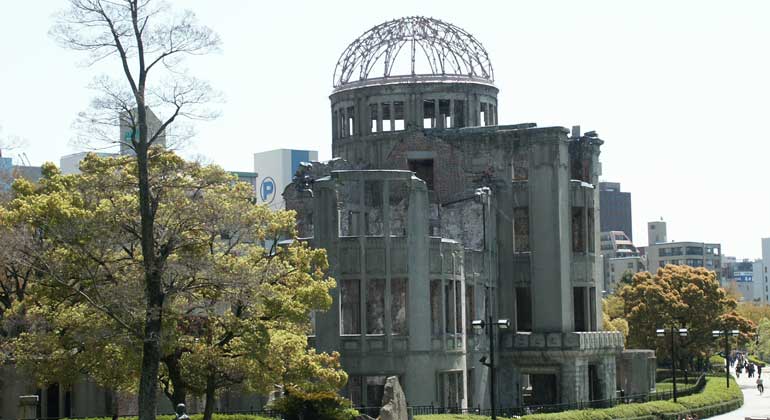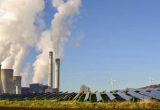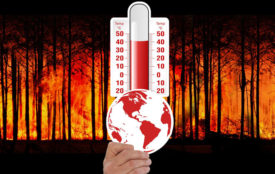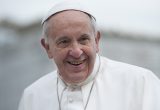Abolish nuclear weapons
“The very possession of nuclear weapons is immoral,” Pope Francis said during his visit to Hiroshima in 2019, addressing the nine states that possess nuclear weapons and threaten to use them, as President Putin has done in these weeks. The Ukraine war shows that nuclear deterrence does not prevent wars.
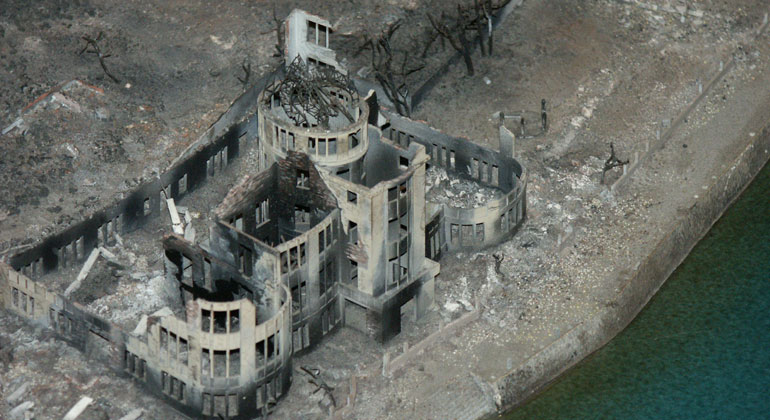
77 years ago, U.S. soldiers dropped an atomic bomb on inhabited territory for the first time in human history. Their target on August 6, 1945, at 8:15 in the morning, was the southern Japanese city of Hiroshima. Only three days later, the second atomic bomb fell on Nagasaki. On Aug. 6, 1945, 140,000 people died in Hiroshima and 73,000 in Nagasaki shortly thereafter.
The US government justifies its brutal use until today with the argument that only by the two atomic bombs the Second World War in the Far East could be ended quickly. Not only Japanese, but also U.S. historians dispute this thesis and point out that the Japanese government had already sent peace signals before and signs of “war fatigue.”
By 2022, however, more than twice as many people had died from the late effects of nuclear radiation – more than 400,000 in all. And the dying continues to this day – even 77 years after the atomic bombs.
How intelligent is nuclear bomb policy?
No mouse has ever built a mousetrap, but people build atomic bombs. The atomic bomb is the greatest and most dangerous freak of our materialistic age.
In recent years, the mayors of Hiroshima and Nagasaki invited me to give lectures. My theme was “From the Atomic Age to the Solar Age.” There are probably no more important places on this topic.
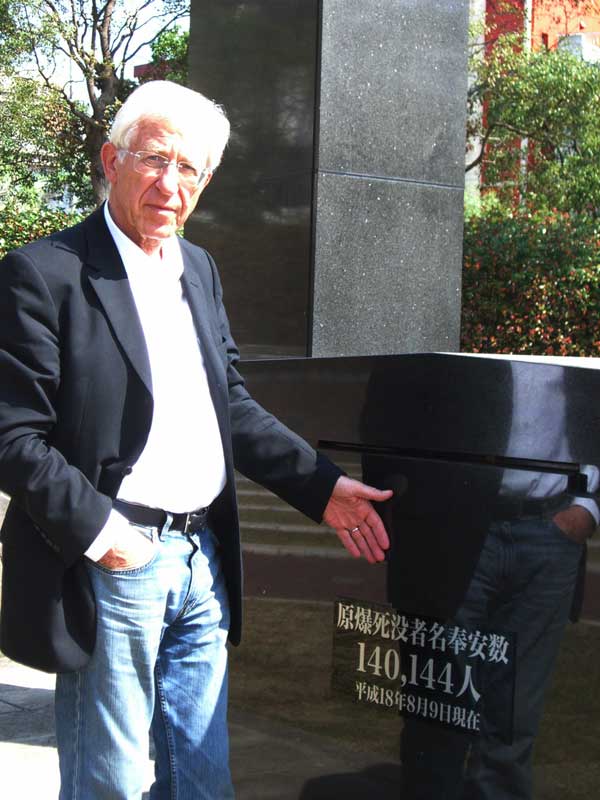
Talking to radiation victims in Hiroshima and Nagasaki or visiting the impressive memorials opens the door to hell on earth. In August 1945, a mass murder occurred the likes of which the world had never imagined before. Within seconds, tens of thousands of people dissolved into nothingness, were a pile of ashes or were irradiated and crippled for the rest of their lives.
However, I was most shocked by a figure given to me by the mayor of Hiroshima: Every year in Japan more than 3,000 people still die from the consequences of nuclear radiation from 1945. Shortly before my lecture in Nagasaki, the mayor slipped me a handwritten note on which he had written the current number of people killed by nuclear radiation in his city so far: 140,144!
77 years later Hiroshima and Nagasaki are not behind us, but still in front of us. People continue to die.
We know through the years of discussions about the atomic bomb for North Korea and Iran about the close connection between the so-called peaceful use of nuclear power and the construction of atomic bombs. Nuclear power plants also produce the material for the bomb. Without nuclear power plants there is no atomic bomb. The world-wide breakdowns in many atomic plants should make also the largest atom friends thoughtful!
However, as long as there are more than 400 nuclear power plants running in the world, unscrupulous power politicians will continue to try to build atomic bombs. 400 nuclear power plants are 400 possible nuclear accidents. There is not a single nuclear power plant in the world that is 100% safe. Only the nuclear residual risk is safe.
We must also reckon with the fact that nuclear bombs will one day fall into the hands of terrorists if we do not leave the nuclear age behind us. But that means closing all nuclear power plants as quickly as possible and generating energy from renewable energy sources in the future – from the sun, wind, bioenergy, geothermal energy, hydropower and ocean energy. With the right political will, the solar energy transition is 100 percent possible in 15 years.
The mayors of Hiroshima and Nagasaki vowed back in 1982 that the nuclear mass murder in their cities must never be forgotten or suppressed by humanity and founded the worldwide organization “Mayors for Peace,” which has since been joined by 8,031 mayors from 164 countries – including the mayors of more than 900 German cities and communities, for example Berlin, Munich, Hanover, Cologne and Frankfurt/Main. According to a FORSA survey, the majority of Germans favor a withdrawal of the 20 U.S. nuclear weapons still stored on German soil.
The goal of the “Mayors for Peace,” who now represent over 300 million people: A world free of nuclear weapons!
The mayor of Hiroshima, Tadatoshi Akiba, optimistic: “Since it was possible to abolish bio- and chemical weapons worldwide, it is of course also possible to abolish the most dangerous weapons, the nuclear weapons. No other city in the world should ever suffer the fate of Hiroshima or Nagasaki. But in order to achieve this goal, many more cities and villages must join our alliance. Please help us to do this in Germany as well. Because only by putting a lot of pressure on the powerful national politicians of the atomic bomb owners can we achieve that the more than 16,000 nuclear warheads worldwide today are destroyed.” (More about the Peace Mayors: www.mayorsforpeace.de)
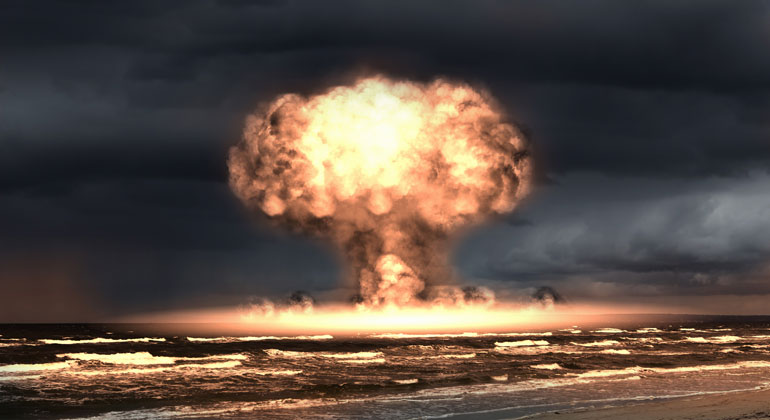
“There is,” the mayor of Nagasaki tells me as I leave, “not the slightest justification for taking cities and villages hostage by nuclear means.” The commitment that runs through my mind is that we owe this commitment to a nuclear weapons-free world to our children and grandchildren. The 16,000 nuclear weapons that exist globally today have the destructive power of 900,000 Hiroshima bombs.
Nuclear weapons are weapons of terror
It is probably the greatest and most dangerous illusion of mankind that we can secure peace in the long run with nuclear weapons.
In 2007, the bomber pilot of Hiroshima, the US soldier Paul Tibbets, died. Shortly before his death, he said, “Yes, I would do it again. I didn’t lose any sleep over it.” To this day, no U.S. president has apologized to Japan for the atomic bombs on Hiroshima and Nagasaki and for mass murder.
Recently, the mayor of Fukushima invited me to speak to 400 Japanese mayors. My topic was – as before in Hiroshima and Nagasaki – “From the nuclear age to the solar age”. I asked the Fukushima mayor, who had just come from the damaged nuclear power plant, what would happen if he entered the reactor. His answer: “After seconds, I would be ashes.”
Wars are a crime against humanity
A nuclear war would probably be the last war, because after that there would probably be no people left to fight a war. The exhortation of conscience, so far disregarded, is: do not forget the lessons of the four great nuclear disasters in Hiroshima, Nagasaki, Chernobyl and Fukushima.
Japanese mayors told me that they alone cannot achieve a nuclear-free world and a world without nuclear power plants. To do so, they need the support of many colleagues around the world. After all, in 2019, 123 UN nations called for the elimination of all nuclear weapons. But all nine nuclear governments voted against it.
Many more German mayors need to campaign for this until the German government also joins the Treaty on the Prohibition of Nuclear Weapons. In doing so, Germany could show that it has actually learned something from its post-1945 history.
For 2,000 years, the ancient Roman principle has been “He who wants peace must prepare for war.” The result of this policy: 2000 years of wars, mass murder and endless suffering. Based on these experiences, we must finally develop this philosophy: “He who wants peace must prepare peace.” I too know that in the times of Putin’s wars, pacifism is a long-term dream, but it remains a necessary dream.
With one-tenth of the world’s military spending, we could ensure that no child goes hungry. And with another tenth, we could ensure that all children could go to school. Wouldn’t these be more worthwhile goals than starting a new arms race, as is happening right now? When will we finally learn that the purpose of our being here is not hate and an arms race, but love and peace?
The lesson of Hiroshima and Nagasaki: We must rethink peace and security as Jesus suggested in the Sermon on the Mount 2000 years ago. His second current proposal: “The sun of the Father shines for all”.
“The Sermon on the Mount of Jesus is the survival program of mankind in the nuclear age” – this weighty sentence was once said to me in Moscow by Mikhail Gorbachev, the former communist leader.
Source
Franz Alt 2022 / Translated with www.DeepL.com/Translator (free version)
